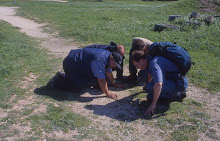The traditional view of biological kingdoms - animals and plants - is that plants are immobile and animals mobile. Later it was added the conditions that plants are immobile and photosynthetic, and thus fungi, which are immobile but non-photosynthetic become a new kingdom in tis own.
There is a large number of unicellualr organisms which are of dubious position, however: microscopic algae are often very mobile and Euglena can shift from photosyntehtic to heterotrphic mode of life- The new kingdom of protists was thus erected to account for these uncertainities.
The rise of molecular phylogeny revolutionised the field: protists are in fact a very heterogeneous assemblages of groups of diverse affinity and fungi are closely related to animals. Both could be suspected from biochemistry (for instance fungi and animals share glycogen and chitin) and from morphology. We should speak of at least a dozen of kingdoms instead of the original two.
But recent advances in phylogenomics have however simplified the picture: there are only three big groups of eukaryotes: Diaphoretyks which include all plants (apart euglena and allied) and most protozoans; Excavates which includes Euglena and a few parasitic protozoans, and Amorpheaea which include Amoebae, Animals and Fungi. It is even possible that the suprgroups are only two, unikonts (with one flagellum in their cells, like in the spermatozoon of animals) and dikonts (with two flagella like spermidia of most plants and the largest part of protozoans). It is like that plants (dikonts) and unikonts (animals and fungi) are a resurrection of the old division, but with fungi in fact immobile animals, and with emphasis shifted to photosynthesis (which can anyhow be lost in many groups like many protozoans) and reproduction (dikonts have usually complex life cylce which lack in animals and fungi; it is a curse of courses of botany the sutdy of the complex cycles of algae and plants).
Iscriviti a:
Commenti sul post (Atom)


Nessun commento:
Posta un commento